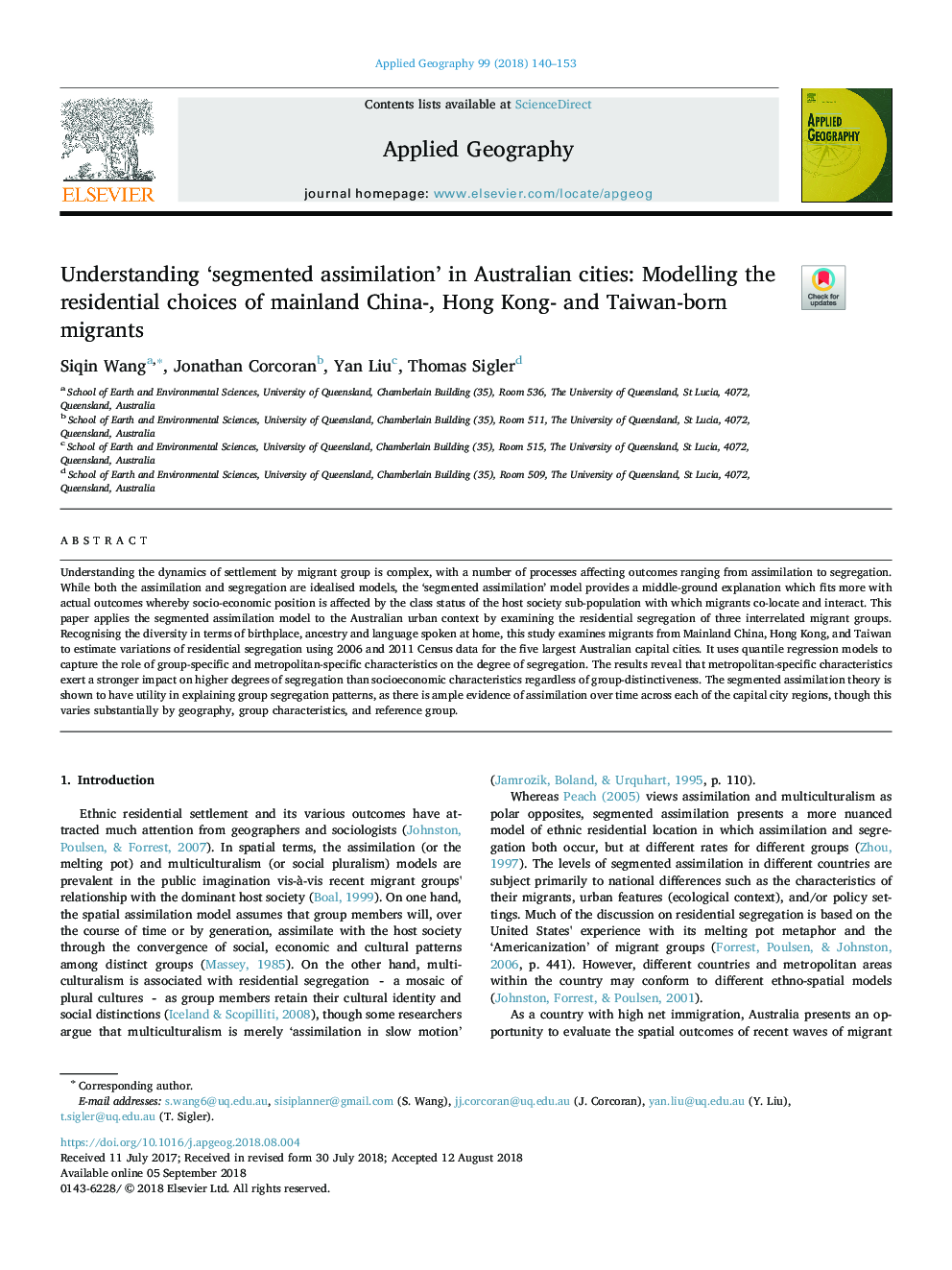| Article ID | Journal | Published Year | Pages | File Type |
|---|---|---|---|---|
| 9951687 | Applied Geography | 2018 | 14 Pages |
Abstract
Understanding the dynamics of settlement by migrant group is complex, with a number of processes affecting outcomes ranging from assimilation to segregation. While both the assimilation and segregation are idealised models, the 'segmented assimilation' model provides a middle-ground explanation which fits more with actual outcomes whereby socio-economic position is affected by the class status of the host society sub-population with which migrants co-locate and interact. This paper applies the segmented assimilation model to the Australian urban context by examining the residential segregation of three interrelated migrant groups. Recognising the diversity in terms of birthplace, ancestry and language spoken at home, this study examines migrants from Mainland China, Hong Kong, and Taiwan to estimate variations of residential segregation using 2006 and 2011 Census data for the five largest Australian capital cities. It uses quantile regression models to capture the role of group-specific and metropolitan-specific characteristics on the degree of segregation. The results reveal that metropolitan-specific characteristics exert a stronger impact on higher degrees of segregation than socioeconomic characteristics regardless of group-distinctiveness. The segmented assimilation theory is shown to have utility in explaining group segregation patterns, as there is ample evidence of assimilation over time across each of the capital city regions, though this varies substantially by geography, group characteristics, and reference group.
Related Topics
Life Sciences
Agricultural and Biological Sciences
Forestry
Authors
Siqin Wang, Jonathan Corcoran, Yan Liu, Thomas Sigler,
